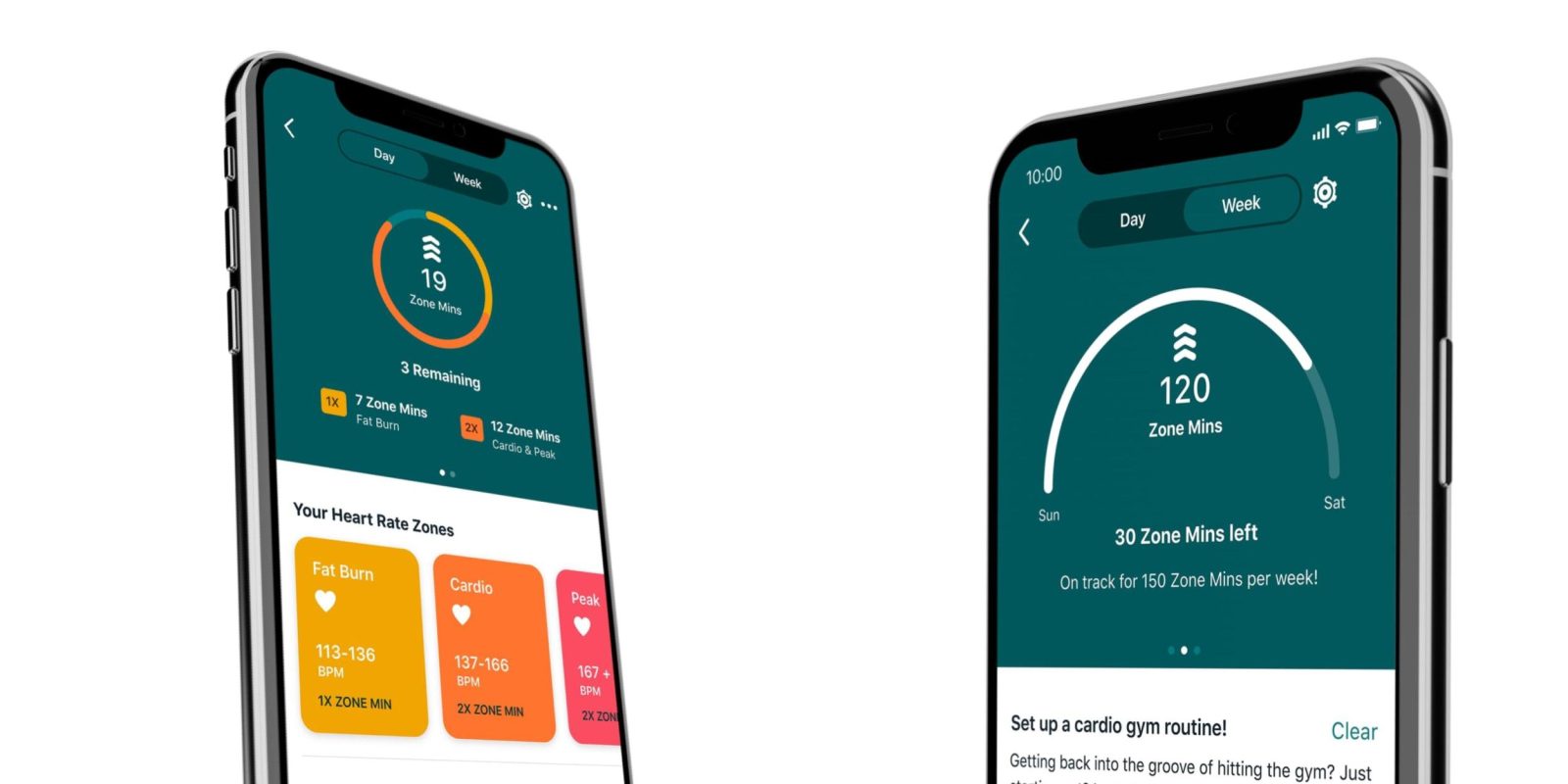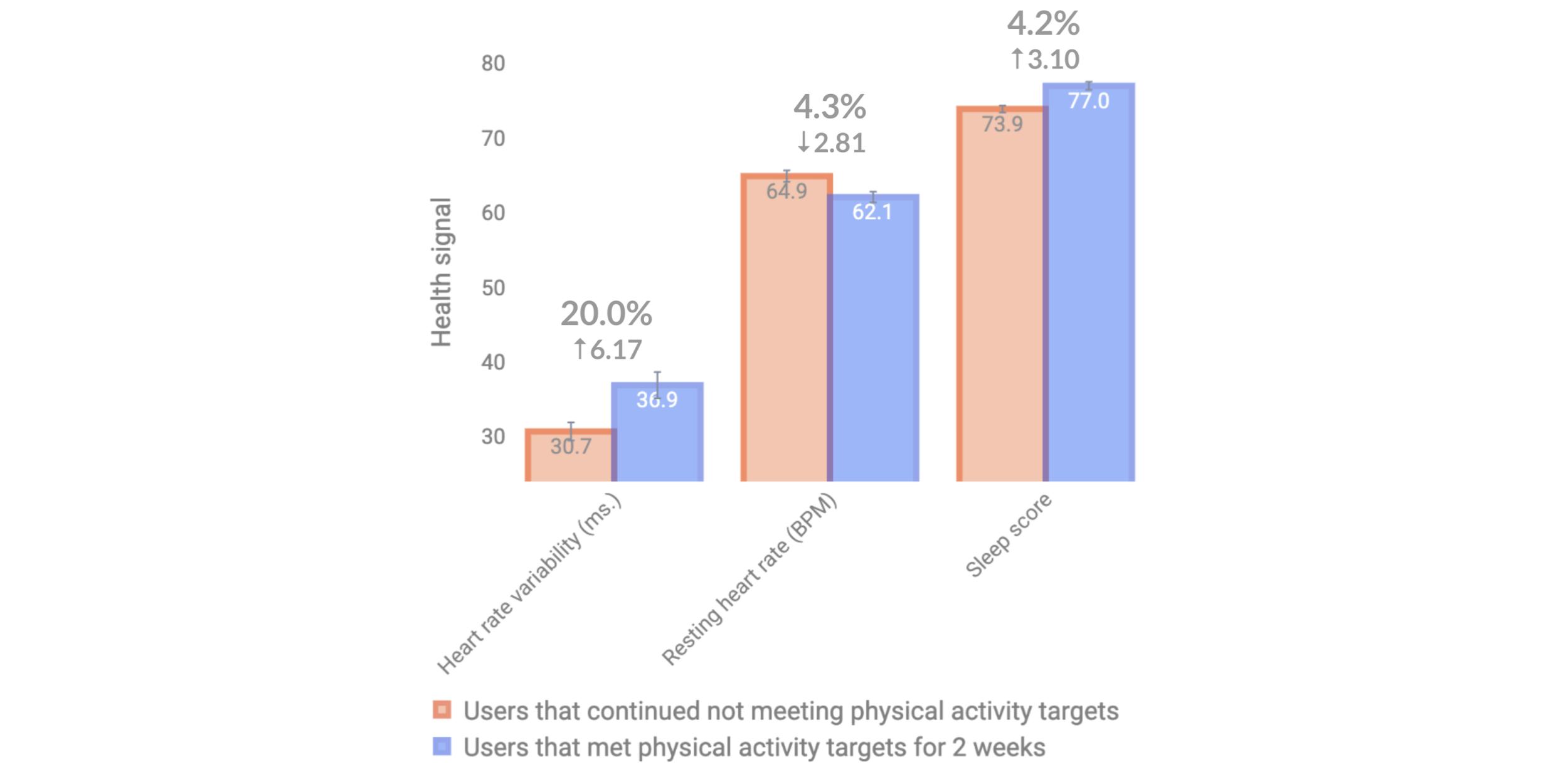
Since 2020, the Active Zone Minutes (AZMs) stat has been one of the main things that Fitbit encourages users to meet, and new research shows the outcomes of hitting those goals.
Active Zone Minutes is a measurement of how time you spend doing “heart-pumping activity.” You get one AZM when you’re exercising in the fat burn zone, and two in cardio or peak zones, which is personalized based on your age and resting heart rate. The “default goal is based on the widely accepted recommendation of 150 minutes of moderate activity or 75 minutes of vigorous activity per week” from the American Heart Association, Centers for Disease Control and Prevention, and World Health Organization.
We analyzed 471 million AZMs and 106 billion steps of anonymous and consenting users who met the physical activity targets in February 2022, but not in January 2022, and assessed whether they saw corresponding improvements in their health compared with users who did not meet the targets in the same period.
Fitbit found “positive health impacts across resting heart rate, HRV, sleep and stress management scores.” Hitting 150 AZMs per week resulted in a:
- 3.08 millisecond higher heart rate variability (HRV measures time between heartbeats with higher being better)
- 1.35 beats per minute lower resting heart rate
- 5.08 higher stress management score than comparable users
Meeting just 10,000 steps:
- 3.44 ms higher heart rate variability
- 3.05 BPM lower resting heart rate
- 3.97 improvement in their stress management score than comparable users.
Meanwhile, hitting both Fitbit goals showed:
- Heart rate variability improved by 20 percent (6.1 ms difference)
- Resting heart rate lowered by 8.1 percent (4 bpm difference)
- Stress management scores lowered by 7.3 percent (5.4 difference)1
1 This analysis was not designed to directly compare the AZM and step count physical activity targets as these distinct workouts are subject to different variables that affect health, such as measurement error. So it is possible that the associations we found with health are attributable to some other unobserved characteristic of the workout.
More on Fitbit:
- First Pixel Watch OTA update rolling out with fixes this December
- Fitbit Sense 2 & Versa 4 review: In the shadow of the Pixel Watch
- $299 Pixel Watch, $499 Pixel 7, & $749 Pixel 7 Pro deals are back
- First Fitbit Sense 2 and Versa 4 update rolls out: Screen cover gesture and on-wrist calls
FTC: We use income earning auto affiliate links. More.





Comments